
The Movie Tourist Visits Skull Island from King Kong
Skull Island is home to the most famous movie ape of all time, the legendary King Kong where all sorts of dangers await explorers looking to meet with the giant gorilla.
“Want to escape to your own desert island or are you just in search of adventure? Skull Island might boast a name as fearsome as its inhabitants, but once you get past the small matter that (much like Australia) everything on the island wants to eat or maim you, you too might just discover that this island really is the embodiment of boy’s own adventure.”
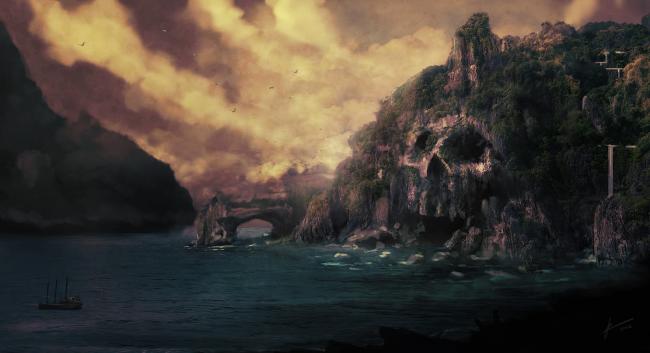
Growing up there was always a fascination for adventures set in exotic locals or mysterious islands from the likes of Robinson Crusoe and The Swiss Family Robinson through to King Solomon’s Mines. There seemed to be no shortage of books to fulfill these childhood fantasies, but it was the original 1933 King Kong which really brought these dreams to life on the screen as directors Merian C. Cooper and Ernest B. Schoedsack gave audiences a true mysterious island of dense jungles, dinosaurs, savage nativex and of course the now iconic giant ape Kong. The fact that these fantastical creations felt so real, via stop motion animation, only adding to the charm. The legendary Willis O’Brien built upon his earlier work for The Lost World and which in turn paved the way for others, including the Academy Award winning Mighty Joe Young.
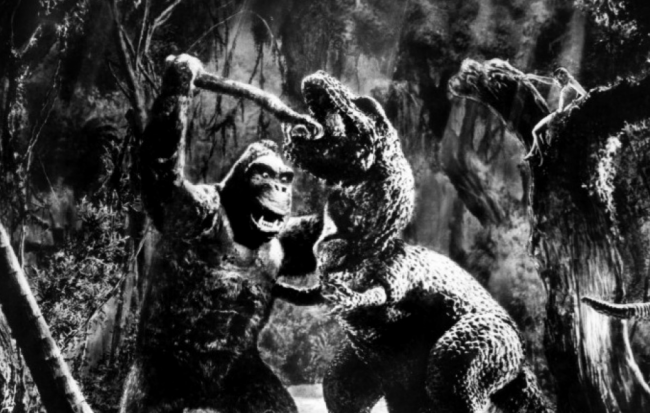
This introduction to Skull Island of course would not be our only adventure here as the same year RKO Pictures attempted to capitalise on the surprise success of the film by rushing out a mere nine months later the ill-fated sequel Son of Kong, which also gave us the sole appearance of Kiko the albino gorilla and titular son of Kong and is no doubt probably more noteworthy for the new creations of the returning O’Brien than the film itself.
Following the failure of Son of Kong audiences would be forced to wait until 1962 when RKO licensed the character of King Kong to the Japanese studio Toho, which is best known for being the home of Godzilla. They planned to pit Kong against the mighty lizard in King Kong Vs. Godzilla, which interestingly enough saw Kong getting the top billing due at the time being considered the bigger star. Toho had originally planned to follow the film with the direct sequel Continuation: King Kong Vs. Godzilla though it never came to fruition with the studio instead seeing the success of the film as a sign that Godzilla was ready to be franchised. A decision gaining further momentum when RKO turned down their request to make the film. Toho would eventually produce another Kong movie in 1967 called King Kong Escapes, which saw them teaming up with Rankin / Bass and their Kong series The King Kong Show, being noteworthy for introducing the world to Kong’s robot counterpart Mechi-Kong, who he climatically battles on the Tokyo Tower. A third film tentatively titled Operation Robinson Crusoe was rejected by Rankin / Bass leaving Toho to push ahead with the film, which would become the seventh Godzilla film Ebirah: Horror of the Deep or the more ho-hum titled Godzilla Vs. The Sea Monster.
These Toho properties would surprisingly spark a trend with the films, which followed, none ever using the name Skull Island even though it was essentially the same location. Instead, the island is referred to as Mondo or Faro island while the Dino De Laurentiis’ 1976 remake and 1986 sequel King Kong Lives more bizarrely saw it referred to as the “Beach of the Skull” despite the fact that it was missing the distinctive skull outcrop, instead choosing to make the island itself the shape of a skull when shown on the satellite photos.
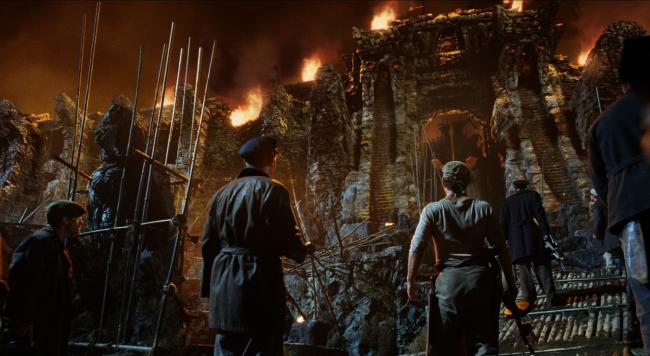
These properties perhaps shortsightedly gave the sense that Skull Island (or whichever alternative is being used) as not being a key element of the Kong world and instead just an identifiable location for the giant ape to be found. In fact, it would take Peter Jackson’s 2005 remake – a dream project for the director – to really bring Skull Island back to the forefront of the story and really recapture the spirit of the 1933 original, which had inspired Jackson much like myself to such childhood wonder. More so, as it finally brought dinosaurs back to the island, something that had noticeably been omitted from the De Laurentiis version whose budget seemingly could only stretch to a giant snake. Jackson meanwhile, fresh off the success of his Lord of the Rings trilogy, used the momentum to push through his monster epic whose runtime certainly matched the size of his monster and most notably one which would spend a considerable amount of time on Skull Island.
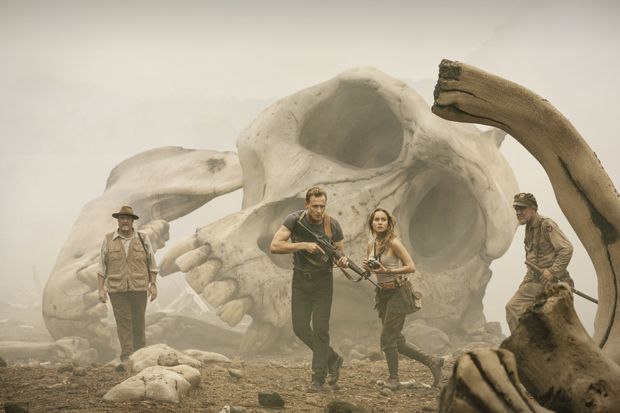
This of course would not be the first time that Jackson had taken audiences to Skull Island, having snuck it into the opening of his zombie splatter comedy Braindead in 1992 were it was named as the home of the Sumatran Rat-Monkey, which causes the film’s zombie outbreak. As a fan of the film, Jackson collected original props and models from the 1933 film, some of which he included in the film, even going so far as to recreate the legendary lost Spider Pit sequence using the same filmmaking techniques of that period. In Jackson’s hands though Skull Island is really given the chance to be expanded and really explored thanks to advancements in special effects not to mention the freedom which CGI effects produced by Weta Digital, which it’s safe to say that Jackson ran with as he essentially cranks up everything that the original film gave audiences so if Kong fights a T-rex here he fights three T-rex’s. Jackson even brings to the screen many of the scenes which weren’t possible or cut from the 1933 production such as the stamped sequence and most disturbing of all, the spider pit. Of course of all the places to explore on these primal shores, the Spider-Pit is unquestionably one of the most nightmarish elements of the film and one that Jackson shoots as a moment of unrelenting horror as crew members are picked off by the giant bugs which inhabit the gloom of this domain. Watching Lumpy the Cook (Andy Serkis) getting overwhelmed and devoured by the carnivorous maggot-like creature Carnictis Sordicus still sends a chill down my spine as this especially remains one of the most disturbing cinematic deaths ever.

By the time we move onto the most recent entry in the Kong franchise Kong: Skull Island our exploration of the island is only further built upon as director Jordan Vogt-Roberts moves away from the rocky mountains and swamps, instead choosing to focus on the waterways, jungles and plains of the island as he transposes the Vietnam war onto the island in much the same way that James Cameron did with Aliens. We are introduced to a host of new species on the island, which include giant insects like the Mother Longlegs and Spore Mantis and more interesting several species that don’t want to consume unwary adventurers such as the island’s giant version of a Water Buffalo with the Sker Buffalo. True, there might be a noticeable lack of dinosaurs in this vision, but the sight of the triceratops skull would seem to indicate that the dinosaurs are either elsewhere or wiped out like Kong’s ancestors by the Skullcrawlers.
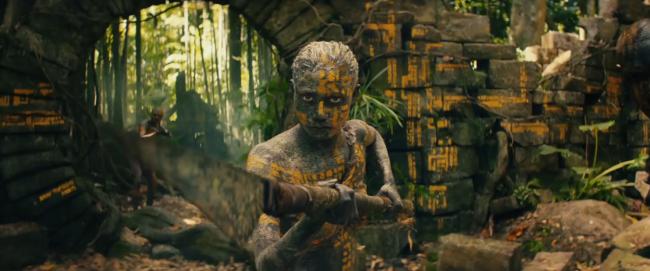
Of course events surrounding the Vietnam war undertones Vogt-Roberts efforts, and much like Jackson, really brings some interesting element to the makeup of the island as the once savage natives are now a more peaceful group with Kong taking on the role of protector against the Skullcrawlers, who Kong – we are lead to believe – has been engaged in an ongoing battle with since they were responsible for the death of his ancestors, as further hinted at by scenes set in a skull graveyard. The Skullcrawler addition might have been an element added to ease Kong into the Legendary Monsterverse and to make it less of a character leap to have him battling rival giant monsters when Legendary gets around to making their version of Godzilla Vs. Kong, which at the time of writing, is currently pencilled in for a 2020 release.
Whether looking at the original film or the more modern interpretations from Jackson and Vogt-Roberts’ Skull Island, it only continues to remain a place of wonder. These films have made the island more than just the domain of Kong, it is a place as exciting to explore with any of our expeditions. This is one location that truly lives on in our minds long after the credits have rolled.
